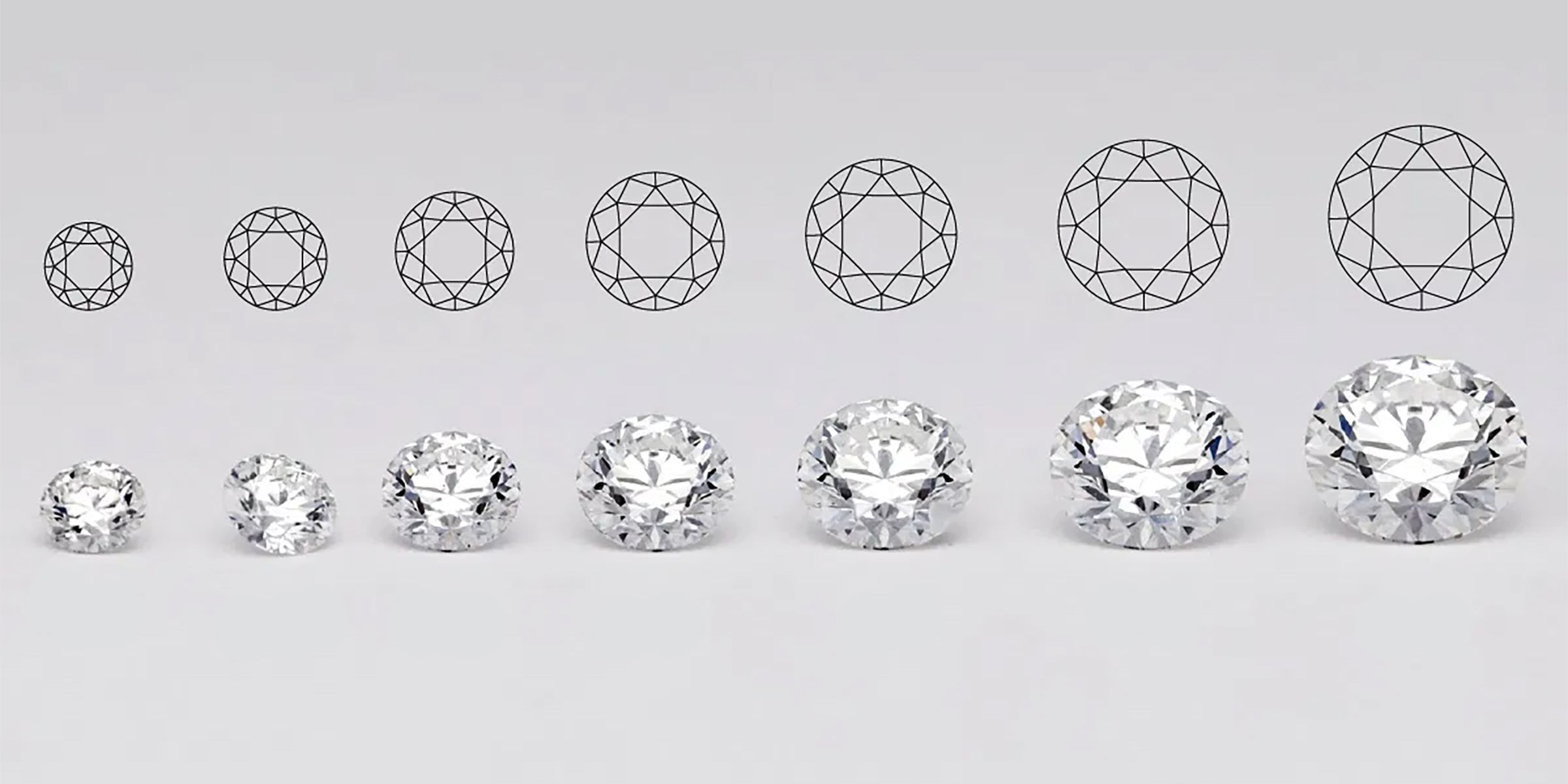
Understanding the 4Cs: Diamond Carat
Understanding Carat Weight: What You Need to Know When Choosing Your Diamond
Carat is one of the most recognised aspects of the 4Cs, yet it’s often misunderstood. It’s a unit that measures a diamond's weight, not its size. While carat weight is often the first factor people consider when shopping for diamonds, many don’t fully grasp its meaning or impact.
At its core, carat reflects how much a diamond weighs. Generally, the higher the carat, the greater the value of the stone. Carat weight plays a crucial role in determining a diamond’s overall quality and price. In this guide, we break down what carat weight means, how it’s measured, and why it matters, helping you make an informed choice that balances size and quality perfectly.
What Does Diamond Carat Mean?
Carat, abbreviated as ‘ct’, measures a diamond’s weight rather than its size. One carat equals 0.2 grams (or 200 milligrams) and is divided into 100 points for precision. For example, a 0.75-carat diamond weighs 75 points.
The term ‘carat’ originates from the carob seed, once used as a natural weight standard in ancient times due to its consistent size and weight, a charming nod to history that lives on in modern diamond grading.
Although carat measures weight, it often influences a diamond’s apparent size. Typically, the higher the carat weight, the larger the diamond’s diameter, which explains why bigger carat stones are highly prized. This connection between weight and visible size is why many associate carat with how big a diamond looks.
How Does Carat Weight Affect Diamond Size?
While carat weight relates to size, it doesn’t tell the whole story. A higher carat diamond may not always appear significantly larger than a smaller one. The diamond’s cut, shape, and proportions strongly affect its visual appearance.
For example, a round diamond with a deeper cut might look smaller than a marquise or oval diamond of the same carat weight. A well-cut diamond often appears larger and more brilliant than a poorly cut stone of similar weight.
Carat Weight and Diamond Size by Shape
Although carat measures weight, the actual size, diameter or length × width, you see varies by shape and cut quality. Here’s a rough guide to how popular diamond shapes typically measure at various carat weights:

Lab-Grown Diamonds and Carat Weight
The same carat principles apply to lab-grown diamonds. Graded identically to natural stones, carat weight affects their size, appearance, and price. However, lab-grown diamonds generally offer greater affordability, letting you choose a larger diamond without increasing your budget.
Balancing Carat with the Other Cs
Carat is important but should be balanced with cut, colour, and clarity, the other 3Cs that define a diamond’s beauty. A larger diamond with a poor cut won’t sparkle like a smaller, expertly cut stone. Often, prioritising cut and clarity over carat weight results in greater brilliance and overall beauty.
At True Brilliance, we only offer diamonds graded VS1 or higher, ensuring every stone combines exceptional size, sparkle, and clarity.
Final Thoughts on Carat Weight
Choosing the right carat weight is a personal balance of style and budget. While carat weight matters, the full beauty of a diamond comes from the harmony of all 4Cs. A well-cut, smaller diamond often makes a more striking impression than a larger stone with lesser qualities. Remember, a diamond’s true brilliance is about balance, not just size.

